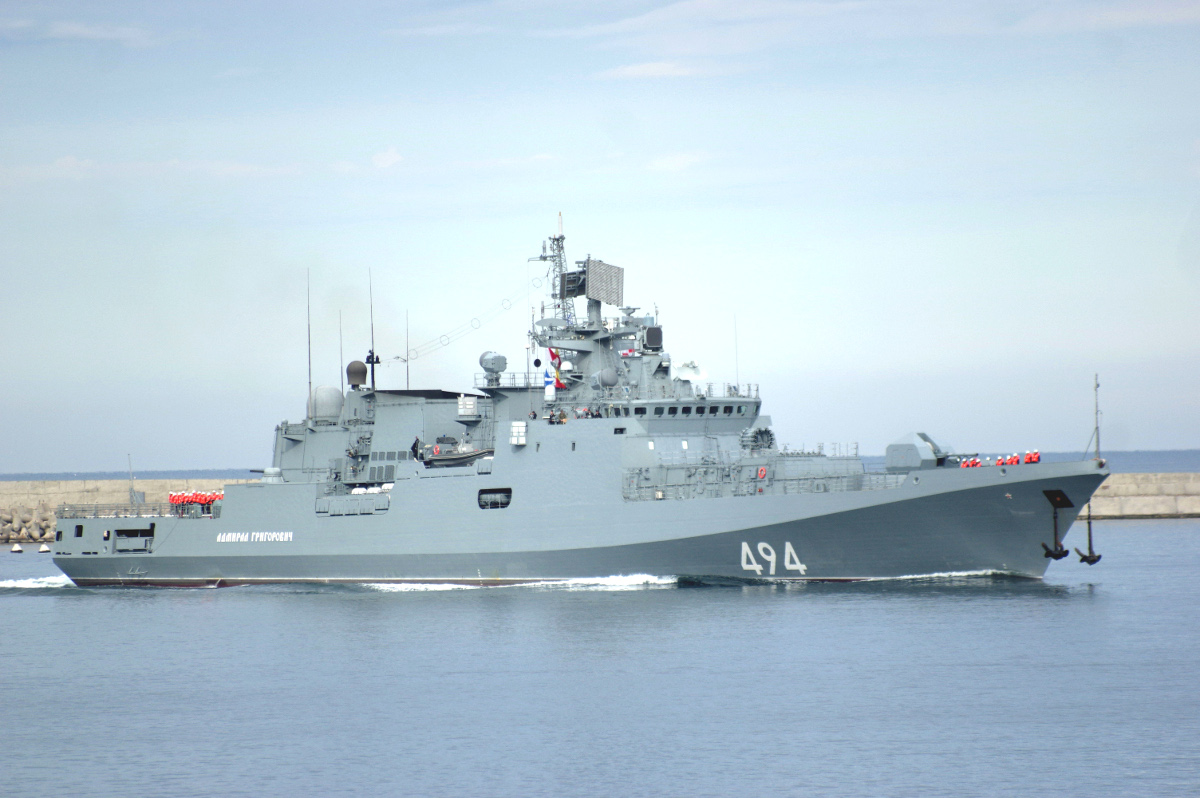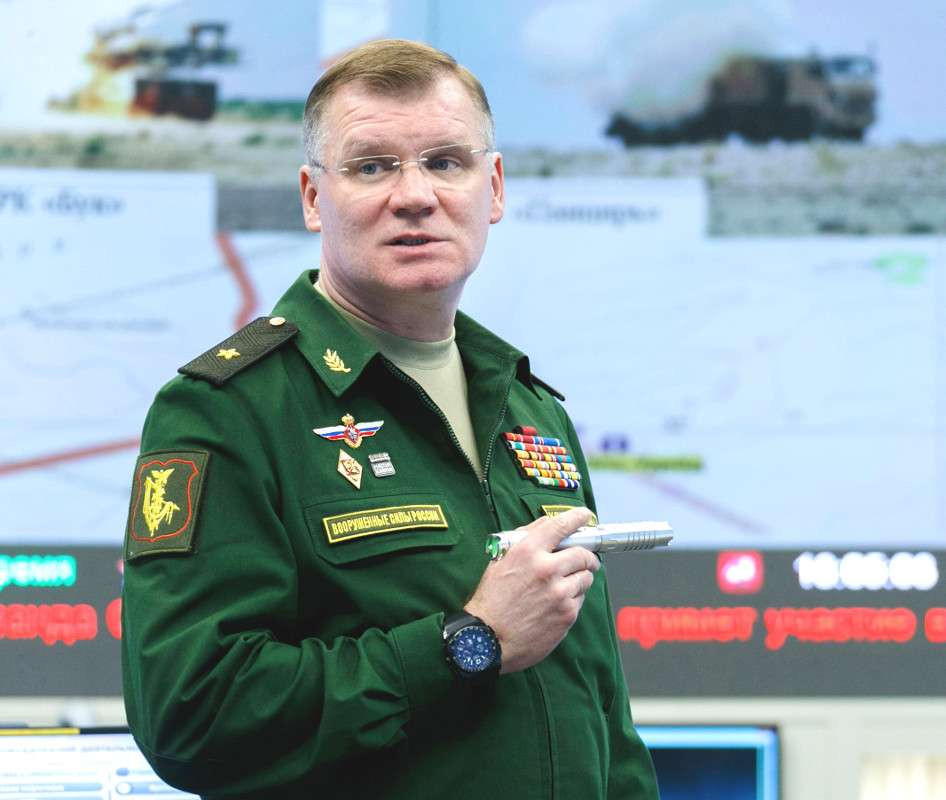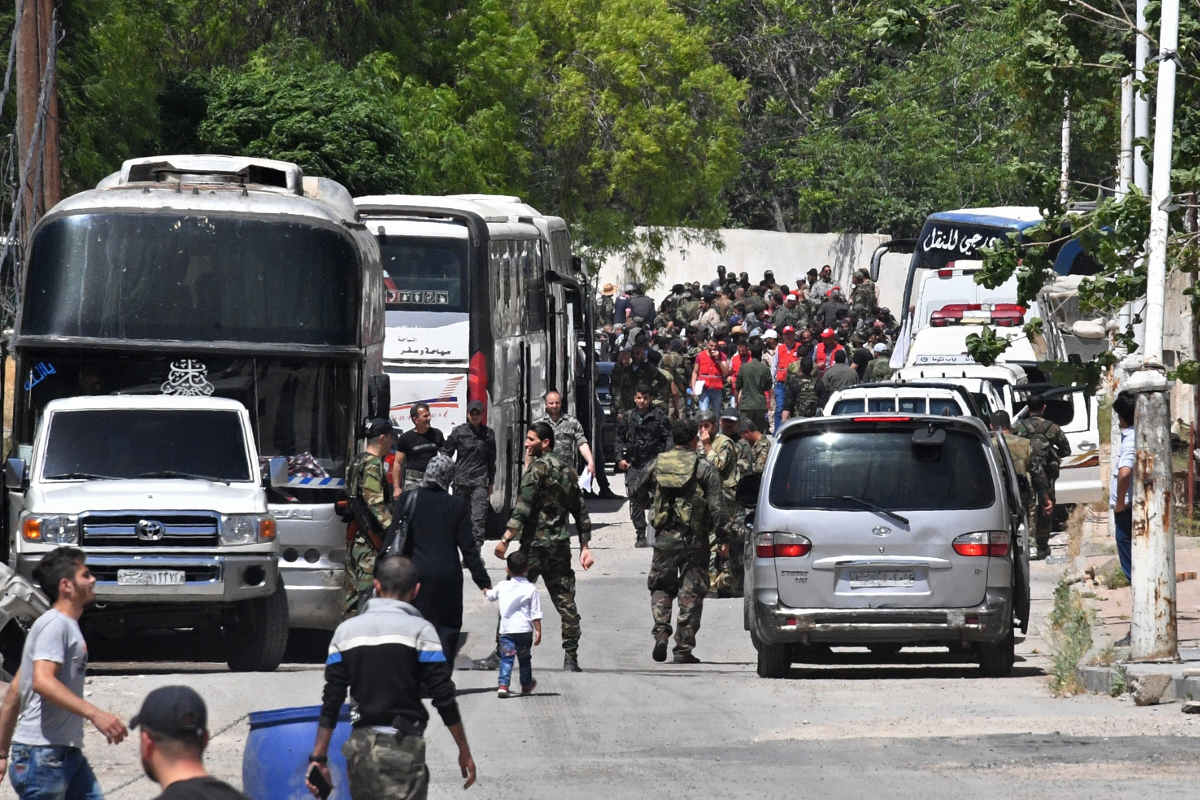More than a dozen Russian warships are either in the eastern Mediterranean Sea or will be there soon, forming an armada of unprecedented size off the coast of Syria. The buildup comes as Syrian dictator Bashar Al Assad moves closer to kicking off for a major offensive into Idlib Governorate, an important rebel stronghold, and as the Kremlin accuses the United States and its allies, without offering any evidence, of preparing to strike the regime in Damascus over any future use of chemical weapons.
As of Aug. 28, 2018, the Russian Navy task force near Syria consisted of a large surface action group, with the Soviet-era Slava-class guided missile cruiser Marshal Ustinov
in the lead, along with a trio of more modern Admiral Grigorovich-class frigates, the Udaloy-class destroyer Severomorsk, and other vessels, many of which are armed with Kalibr land attack cruise missiles. There was also a pair of Kilo-class attack submarines attached to the force, which can also fire Kalibrs. Russia’s Northern and Black Sea fleets had both contributed ships to the operation.
In terms of total ships, this is the largest Russian naval buildup in the region since Russia first intervened on behalf of Assad in 2015. In 2016, the Kremlin dispatched another flotilla with eight vessels, but this included the aircraft carrier Admiral Kuznetsov and battlecruiser Pyotr Velikiy, two of the largest ships in Russia’s Navy. That naval force arrived off the Syrian coast ahead of another offensive, the one to route rebel forces from their long-time stronghold in Aleppo.
“The Russian Navy has dispatched substantial naval forces to the Mediterranean, including several ships equipped with modern cruise missiles,” NATO spokesperson Oana Lungescu told Israeli newspaper Haaretz on Aug. 28, 2018. “We will not speculate on the intention of the Russian fleet, but it is important that all actors in the region exercise restraint and refrain from worsening an already disastrous humanitarian situation in Syria.”

It seems most likely that Russia is positioning itself to support Assad’s reportedly imminent push into Idlib. Russian ships in the Mediterranean Sea, as well as the Caspian Sea, together with combat aircraft and ground-based missiles and conventional artillery, have supported the Syrian government’s offensives on and off since 2015.
In December 2017, Russian President Vladimir Putin declared total victory over terrorists and rebels in Syria, but made it clear that his country would continue supporting Assad for as long as necessary. His pronouncement turned out to be premature and, in May 2018, Putin said that the Russian Navy would continue to maintain a permanent, rotational presence in the Eastern Mediterranean “given the persistent threat of terrorist incursions.”
Situated in Syria’s northwest, Idlib has remained a bastion for rebel forces opposed to Assad and has stubbornly resisted previous offensives in spite of Russia’s very active support. In February 2018, militants managed to shoot down a Russian Su-25 Frogfoot ground attack aircraft in the region.
It is also reportedly the source of a steady stream of attacks using improvised unmanned aerial vehicles against Russia’s Khmeimim Air Base in neighboring Latakia Governorate, as well as its Tartus naval outpost further to the south. In January 2018, rebels launched an unprecedented mass drone attack on Khmeimim and the Kremlin says militants have stepped up their unmanned operations in recent weeks.
The Russians insist that none of those attacks have been successful and it has been difficult to verify the claims one way or another. There has been a steady stream of reported incidents since the beginning of 2017.
The video below shows improvised unmanned aerial vehicles that Russian forces say Syrian rebels attempted to use to attack Khmeimim earlier in August 2018.

At the same time, there have been reports that Assad’s forces may be planning to use chemical weapons to flush out the rebels from Idlib and sow panic among the region’s civilian population, as they have done in other major Syrian government offensives. In addition, on Aug. 21, 2018, the United States, along with the United Kingdom and France, threatened military action against Assad’s regime if the regime’s forces employed these tactics again. In April 2018, these three countries launched a series of cruise missile strikes against a number of Syrian government chemical weapon-related sites.
“Our position on the Assad regime’s use of chemical weapons is unchanged,” the joint statement read. “As we have demonstrated, we will respond appropriately to any further use of chemical weapons by the Syrian regime, which has had such devastating humanitarian consequences for the Syrian population.”
This has, in turn, prompted Russia to accuse the United States and its allies of aiding rebels in preparing a false flag attack that would provide the justification for striking Assad again. The Kremlin has provided no evidence to substantiate its claims, which include the assertion that U.K. private military company Olive Group, under the direction of the U.K. government, is directly supporting these activities in Syria.
This is not the first time the Russians have made these types of allegations against the United Kingdom and the accusations fit a now-typical pattern of deflection and disinformation that has become a hallmark of Russia’s information operations in general. At the core of the Kremlin’s playbook is to accuse its opponents of actually being responsible for whatever it or its allies stand accused of, if not more heinous actions altogether. Even if these reverse claims aren’t believable, they serve to muddy the waters and add confusing and conflicting information into what is already a complicated situation.

That the Kremlin is making these statements at all is a strong indicator that Assad is considering the use of chemical weapons or that the Russians believe he will. They also may truly believe that the United States, the United Kingdom, and France would be inclined to act again militarily in response to such actions.
Russia might hope that its flotilla of ships in the eastern Mediterranean will serve as a deterrent, making the U.S. military and its allies wary of striking targets in and around Syria for fear of inadvertently hitting Russian forces. Just having such a large number of vessels there could simply serve as a potential hazard to navigation for any American-led naval force looking to get into position to fire cruise missiles at Syrian targets or offer advance warning of those strikes.
It could also complicate the planning and risk analysis for such an operation, since U.S. and allied commanders would have to take into account, at least to some degree, a host of new potential threats to friendly ships and aircraft operating in the eastern Mediterranean. In the April 2018 strikes, British and French aircraft, as well as French ships, fired their cruise missiles into Syria from this general area and the U.S.-led strike force set up combat air patrols and aerial refueling tanker orbits in the area to both protect and support the operation. There would also be the dangerous possibility that firing cruise missiles over Russian ships might lead them to believe they were the ones actually under attack and to respond in kind, resulting in a far more serious international incident.

It is still unlikely that American and Russian forces will actually come to blows, though. If the U.S.-led strikes in April 2018, as well as a slew of Israeli air and missile strikes in the past few years, are any indication, the Kremlin’s forces in Syria are either not authorized to respond in any way, in order to prevent the situation from escalating into a larger conflict, or are simply incapable of doing so even if they wanted to. In addition, in the previous American-led strikes, U.S. forces largely avoided the Mediterranean, firing a significant portion of their cruise missiles from ships in the Red Sea and the Persian Gulf and from aircraft flying into Syria via Jordan to the South.
That’s not to say that there aren’t significant tensions between Russia and the United States, the rest of NATO, and other American allies and partners that could potentially take even more worrisome turns. In September 2018, more than 300,000 troops from Russia, China, and Mongolia will take part in the largest Russian military exercises since the end of the Cold War.
Russian officials have publicly said that the drills, known as Vostok-2018, or East-2018, are a message to its international opponents. “The country’s [Russia’s] ability to defend itself in the current international situation, which is often aggressive and unfriendly towards our country, means [the exercise] is justified,” Kremlin spokesperson Dmitry Peskov told reporters during a conference call on Aug. 28, 2018.

It’s not clear whether Vostok-2018 will have any more of a deterrent impact than the appearance of the Russian naval force off the coast of Syria. It is a clear indication that Russia intends to continue responding to foreign policy challenges with assertive behavior.
As for how the situation in Syria will play out, that also remains to be seen. There are reports that Russia is attempting to broker a deal, possibly with Turkey, to get rebels and supportive civilians out of Idlib.
The Syrian government has cut similar deals with militants and terrorists in the past, which have sent them into areas of Eastern Syria where U.S.-backed forces are in control or out of the country entirely. This has allowed the Syrian regime to fill the void with pro-government civilians.
An earlier arrangement actually sent rebels from the suburbs of Damascus into Idlib, which effectively concentrated them in that region. After his forces take control of Idlib, which seems to increasingly inevitable, Assad will have reasserted his authority in virtually all of western Syria, save for a portion in the north where Turkish forces have established a buffer zone in order to fight Kurdish groups.

There are also reports that the U.S. government is engaged in talks over the situation with the Russian government and may be trying to set the stage for some sort of resolution to the conflict. U.S. President Donald Trump has long advocated for pulling U.S. troops out of the country and turning responsibility over to a mix of local forces and foreign partners.
To bolster its own position and shield Assad, Russia appears to have put into motion a multi-part hybrid plan that involves both an information warfare campaigned backed up by a pre-planned and otherwise candid military response. Whatever happens, it appears the Kremlin intends to throw its full weight behind Assad’s next offensive and there are strong indicators that what will already almost certainly be a brutal campaign in Idlib is very likely to include a new spate of chemical weapon attacks.
Contact the author: jtrevithickpr@gmail.com
